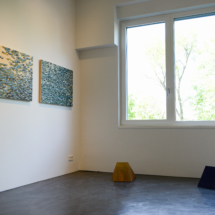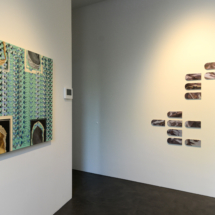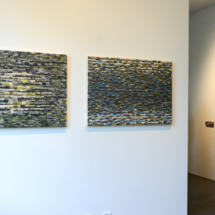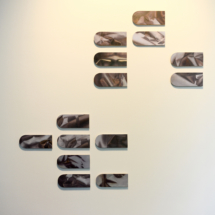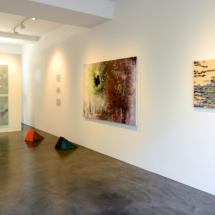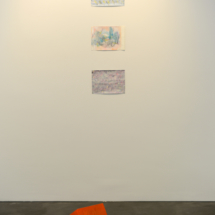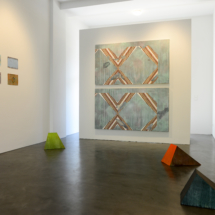Mapping in Memory
Yi Dai
Hyojun Hyun
Vivien Zhang
Exhibition: 30 April – 6 June 2015
curated by Ángels Miralda
Mapping seeks to organize, explain, render visible. Mapping also abstracts the city into a bird’s-eye, two-dimensional, representation of a physical and temporal experience. Memory distorts, rearranges, focuses, and forgets. Memory also traps our physical and temporal experience of the city into bursts and fragments. The title might also read as a memorial, “in memory” of mapping. All three artists map the world in a different way; reflective of journeys and assimilation; unlike the bird’s-eye map, there exist personal elements and experiences, incidents of narrative, and individual fascination. The two terms contradict themselves and each other, clarifying whilst veiling, distorting and making knowable. They converse with each other and bring up notions of human experience, geography, monuments, journeys, and transformations that come about from re-visiting incidents of narrative.
Yi Dai works with notions of chance, natural elements, and technological metaphors. This exhibition includes a selection of works from the series Inertia (2013-2015), produced from train journeys in several countries. Using an iPhone camera, Dai captures the moving landscape once every 10 seconds. Each of these frames is printed onto translucent paper and acts as a physical pixel on the canvas. Arranged in rows and clouds, these pixels create a collage of landscapes that escapes temporality while implying motion. They give the impression of the recollection of a voyage in abstract vision, while using a tool that was meant to offer us ultimate realism.
Hyojun Hyun is interested in the physical marks of the city including graffiti and industrial debris. These elements are non-intentional marks that are created organically in the urban environment. They become landmarks and vernacular works of art. Hyun re-works these elements from memory, drawing on art history and personal narratives to aggrandize the once passed-over. Non-official constructions such as graffiti or empty lots don’t appear on standardized city maps, but are a lived reality for the inhabitants of the area.
Vivien Zhang uses repetition along with an array of self-informed and evolving motifs to generate fields of intersection. The shapes and objects come from the experience of living in a multitude of different places and disjointed cultures, as well as familiar objects that remain present in memory. Repetition strengthens but also makes the objects redundant, and their hierarchies are constantly re-negotiated to confront expectations that arise from structured systems. Zhang develops the canvas as a placeless site, in which objects exist outside of themselves; control and interventions weave in and out of each other, fragmentation and order exist side by side.
